《英汉实用中医药大全 1 中医学基础》
| 作者 | 徐象才,刘承才主编 编者 |
|---|---|
| 出版 | 北京:高等教育出版社 |
| 参考页数 | 534 |
| 出版时间 | 1991(求助前请核对) 目录预览 |
| ISBN号 | 7040033615 — 求助条款 |
| PDF编号 | 87725028(仅供预览,未存储实际文件) |
| 求助格式 | 扫描PDF(若分多册发行,每次仅能受理1册) |
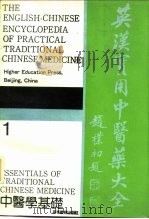
Notes1
1 Introduction1
1.1 Traditional Chinese Medicine(TCM)1
1.2 Theoretical System of TCM1
1.3 Characteristic Features of TCM2
1.4 The Concept of Wholism3
1.5 Bianzheng Lunzhi3
1.7 Treatment of Different Diseases with the SameTherapy4
1.6 Treatment of the Same Disease with DifferentTherapeutic Methods4
2 Yin-Yang and the Five Elements5
2.1 Yin-Yang Doctrine5
2.2 The Unity of Yin and Yang as Two Opposites6
2.3 Interdependence between Yin and Yang7
2.4 Wane and Wax of Yin and Yang8
2.5 Transformation of Yin and Yang8
2.6 Classification of the Structures of the Body in Termsof Yin and Yang9
2.7 Equilibrium of Yin and Yang10
2.12 An Excess of Yin11
2.11 An Excess of Yang Producing Heat11
2.8 Relative Excessiveness of Yin or Yang11
2.10 Disorder of Yin Due to An Excess of Yang11
2.9 An Excess of Yang11
2.13 Disorder of Yang Due to An Excess of Yin12
2.14 An Excess of Yin Producing Cold12
2.15 Insufficiency of Yin or Yang12
2.16 Deficiency of Yang13
2.17 Insufficiency of Yin13
2.18 Deficiency of Yang Affecting Yin13
2.19 Deficiency of Yin Affecting Yang13
2.20 Reestablishment of Yang from Yin13
2.21 Reestablishment of Yin from Yang14
2.22 Classification of Drugs in Terms of Yin and Yang14
2.23 Five-Element Theory15
2.24 Generation in the Five Elements16
2.25 Restriction in the Five Elements16
2.27 Violation in the Five Elements17
2.28 Properties of the Five Elements17
2.26 Encroachment in the Five Elements17
2.29 Reinforcing the Mother-Organ in Case ofDeficiency-Syndrome18
2.30 Reducing the Child-Organ in Case ofExcess-Syndrome19
2.31 A Method of Providing Water for the Growth ofWood19
2.32 Benefiting Fire to Reinforce Earth20
2.33 Mutual Promotion of Metal and Water20
2.34 Supplementing Metal by Way of Building up Earth20
2.37 Assisting Metal to Subdue Hyperactivity of Wood21
2.36 Inhibiting Wood to Support Earth21
2.35 Warming Earth to Restrain Water21
2.38 Purging the Heart-Fire(South)to Nourish theKidney-Water(North)22
3 Phase of Viscera23
3.1 Phase of Viscera23
3.2 Viscera-Phase Doctrine23
3.3 Five Zang-Organs23
3.4 Six Fu-Organs24
3.5 Qiheng(奇恒Extraordinary)Fu-Organs24
3.6 The Heart24
3.8 The Heart in Charge of Mental Activities25
3.7 The Heart in Charge of Blood and Vessels25
3.9 The Heart Responsible for Joy26
3.10 The Heart Connecting Vessels and Its ConditionReflected in Complexion26
3.11 Sweat Derived from Blood Regulated by the Heart27
3.12 The Heart with Its Specific Orifice in the Tongue27
3.13 The Lungs28
3.14 Qi and Respiration Dominated by the Lungs28
3.15 Dispersing and Descending Functions of the Lungs29
3.16 Water Metabolism Regulated by the Lungs30
3.19 The Lungs Responsible for Melancholy31
3.17 Convergence of Blood Vessels in the Lungs31
3.18 The Lungs in Charge of Coordination of FunctionalActivities31
3.20 The Lungs Connected with the Skin and TheirCondition Reflected on Vellus Hairs32
3.21 Nasal Discharge Derived from the Lungs33
3.22 The Nose As the Window of the Lungs33
3.23 The Spleen33
3.24 The Spleen in Charge of Transportation andTransformation34
3.25 The Spleen in Charge of Sending up EssentialSubstances35
3.26 Blood Flow Controlled by the Spleen36
3.27 The Spleen Responsible for Anxiety36
3.29 Saliva Derived from the Spleen37
3.28 The Spleen Related to the Muscles37
3.30 The Spleen Having Its Body Opening in the Mouthand Its Outward Manifestations on the Lips38
3.31 The Liver38
3.32 Normal Flow of Qi Governed by the Liver39
3.33 The Liver Storing Blood41
3.34 The Liver Responsible for Anger42
3.35 The Liver Related to Tendons with Its OutwardManifestations on the Nails42
3.36 Tears Being the Secretion Derived from the Liver43
3.38 The Kidneys44
3.37 The Liver Having Its Specific Body Opening in theEyes44
3.39 Essence Stored by the Kidneys45
3.40 The Kidneys Domination Growth and Development46
3.41 Reproduction Dominated by the Kidneys47
3.42 Water Metabolism Governed by the Kidneys47
3.43 The Kidneys Governing Reception of Air48
3.44 The Kidneys Responsible for Fear49
3.45 The Kidneys Dominating Bones with their PhysiologicalStates Reflected on Hairs49
3.47 The Kidneys Having Their Openings in the Ears andTwo Yin-Orifices50
3.46 Spittle Derived from Kidneys50
3.48 The Gate of Life51
3.49 The Gallbladder52
3.50 The Gallbladder as a Fu-Organ for ContainingRefined Juice52
3.51 The Gallbladder Storing and Excreting Bile53
3.52 The Stomach53
3.53 The Stomach Performing the Function of Receiveingand Decomposing Foodstuff54
3.54 The Stomach as the Reservoir of Foodstuff54
3.56 The Stomach-Qi55
3.55 Descending Function of the Stomach55
3.57 The Small Intestine56
3.58 The Small Intestine Storing and Digesting Food56
3.59 The Small Intestine Separating the Useful Substancesfrom the Waste Ones57
3.60 The Large Intestine57
3.61 The Large Intestine Conveying and TransformingWaste Products58
3.62 The Urinary Bladder58
3.63 The Urinary Bladder Storing and Discharging Urine58
3.64 The Tri-Jiao59
3.65 Tri-Jiao as a Passageway of Various Kinds of Qi59
3.67 The Upper-Jiao60
3.66 Tri-Jiao as a Pathway for Circulation of Fluid60
3.68 The Middle-Jiao61
3.69 The Lower-Fiao61
3.70 The Brain61
3.71 The Marrow62
3.72 The Uterus63
3.73 The Tiangui63
3.74 The Interior-Exterior Relationship between theHeart and the Small Intestine64
3.75 The Interior-Exterior Relationship between theLungs and the Large Intestine64
3.76 The Interior-Exterior Relationship between theSpleen and the Stomach65
3.77 The Interior-Exterior Relationship between theLiver and the Gallbladder66
3.78 The Interior-Exterior Relationship between theKidneys and the Urinary Bladder66
3.79 Relationship between the Heart and the Lungs67
3.80 Relationship between the Heart and the Spleen68
3.81 Relationship between the Heart and the Liver69
3.82 Relationship between the Heart and the Kidneys69
3.83 Relationship between the Lungs and the Spleen70
3.84 Relationship between the Lungs and the Liver71
3.85 Relationship between the Lungs and the Kidneys72
3.86 Relationship between the Liver and the Spleen73
3.87 Relationship between the Liver and the Kidneys74
3.88 Relationship between the Spleen and the Kidneys75
4 Qi,Blood and Body Fluid77
4.1 Qi77
4.2 Formation of Qi77
4.3 Impulsing Function of Qi78
4.4 Warming Function of Qi78
4.5 Defending Function of Qi78
4.8 Primordial Qi79
4.7 Transforming Function of Qi79
4.6 Controlling Function of Qi79
4.9 Pectoral Qi80
4.10 Qi of the Middle-Jiao80
4.11 Nutritive Qi(Ying-Qi)81
4.12 Defensive Qi(Wei-Qi)81
4.13 Vital Qi(Genuine Qi)82
4.14 Functioning of Qi82
4.15 Blood82
4.16 Formation of Blood82
4.19 Circulation of Blood83
4.18 Blood As Material Basis for Mental Activities83
4.17 Blood Serving Nutritive Function83
4.20 Body Fluid84
4.21 Formation,Distribution and Excretion of BodyFluid84
4.22 Functions of the Body Fluid85
4.23 Qi As the Commander of Blood85
4.24 Blood As the Mother of Qi86
4.25 Body Fluid and Blood Derived from the SameSource86
5.1 Meridian Doctrine87
5.2 Channels and Collaterals87
5 Meridian87
5.3 Meridian System88
5.4 Nomenclature of Twelve Regular Channels89
5.5 Trends and Connexions of Twelve Regular Channels89
5.6 Distributive Law of Twelve Regular Channels90
5.7 Exterior-Interior Relations of Twelve RegularChannels91
5.8 Order of Circulation of Qi-Blood in Twelve RegularChannels91
5.9 Eight Extra Channels92
5.10 Du Mai(督脉Du Channel)92
5.12 Chong Mai(冲脉Chong Channel)93
5.11 Ren Mai(任脉Ren Channel)93
5.13 Dai Mai(带脉Dai Channel)94
5.14 Yinwei Mai(阴维脉Yinwei Channel)and YangweiMai(阳维脉Yangwei Channel)94
5.15 Yinqiao Mai(阴跷脉Yinqiao Channel)and YangqiaoMai(阳跷脉Yangqiao Channel)94
5.16 Branches of Twelve Regular Channels94
5.17 Fu Luo(浮络Superficial Collaterals)95
5.18 Sun Luo(孙络Minute Collaterals)95
5.19 Twelve Skin Areas95
5.21 Physiological Functions of Meridian96
5.20 Twelve Channel-Musculatures96
6 Etiology and Occurrence of Disease97
6.1 Disease97
6.2 Occurrence of Disease97
6.3 Cause of Disease98
6.4 The Theory of Three Categories of Etiologic Factors99
6.5 Liu Yin(六淫Six Climate Conditions in Excess asPathogenic Factors)100
6.6 Characteristics of the Six Climatic Conditions inExcess as Pathogenic Factors100
6.7 Wind-Pathogen101
6.8 Cold-Pathogen102
6.9 Summer-Heat Pathogen103
6.10 Damp-Pathogen104
6.11 Dry-Pathogen105
6.12 Fire (Heat)-Pathogen106
6.13 Epidemic Pathogenic Factor107
6.14 Internal Impairment by Seven Emotions108
6.15 Emotions and Qi and Blood in Internal Organs108
6.16 Features of Seven Emotions as Pathogenic Factors109
6.17 Improper Diet110
6.18 Imbalance between Work and Rest111
6.19 Traumatic Injury112
6.20 Phlegm Retention113
6.21 Formation of Phlegm Retention114
6.22 Pathogenic Characteristics of Phlegm Retention115
6.23 Blood Stasis116
6.24 Formation of Blood Stasis116
6.25 Pathological Characteristics of Blood Stasis117
6.26 Vital Qi118
6.28 Insufficiency of Vital Qi as the Intrinsic Factorin the Causation of Disease119
6.29 Pathogens as the Predominant Factor in the Causationof Disease119
6.27 Pathogenic Factor119
6.30 No Occurrence of Disease-the Outcome of the Victoryof Vital Qi over Pathogens120
6.31 Occurrence of Disease-the Outcome of the Victory ofPathogens over Vital Qi120
6.32 Environment as a Factor in the Causation of Disease121
7 Pathogenesis123
7.1 Pathogenesis123
7.2 Wax or Wane of Vital Qi and Pathogens123
7.3 Excess Syndrome124
7.4 Deficiency Syndrome125
7.6 Genuine or Pseudo-Excess or Deficiency Syndrome126
7.5 A Combination of Deficiency and Excess Syndromes126
7.7 Recovery from Disease as a Result of Victory of VitalQi over Pathogens127
7.8 Development of Disease as a Result of Victory ofPathogens over Vital Qi128
7.9 Imbalance between Yin and Yang129
7.10 Relative Excessiveness of Yin or Yang130
7.11 Heat Syndrome Due to an Excess of Yang131
7.12 Cold Syndrome Due to an Excess of Yin131
7.13 Relative Deficiency of Yin or Yang132
7.14 Cold Syndrome Due to Yang-Deficiency133
7.16 Mutual Impairment of Yin and Yang134
7.15 Heat Syndrome Due to Yin-Deficiency134
7.17 Deficiency of Yin Affecting Yang135
7.18 Deficiency of Yang Affecting Yin135
7.19 Geju(格拒Opposition and Exclusion)of Yin andYang136
7.20 Yang Kept Externally by Yin-Excess in the Interior137
7.21 Yin Kept Externally by Yang-Excess in the Interior137
7.22 Yin Depletion138
7.23 Yang Depletion138
7.24 Derangement of Qi and Blood139
7.25 Deficiency of Qi139
7.26 Disorder of Qi140
7.27 Stagnation of Qi141
7.28 Reversed Flow of Qi141
7.29 Collapse of Qi142
7.30 Blockage of Qi143
7.31 Exhaustion of Qi143
7.32 Deficiency of Blood144
7.33 Blood Stasis144
7.34 Blood-Heat145
7.36 Failure of Qi to Control Flow of Blood146
7.35 Stagnation of Qi and Blood Stasis146
7.38 Deficiency of Both Qi and Blood147
7.39 Failure of Qi and Blood to Nourish Channels147
7.37 Exhaustion of Qi Resulting from Hemorrhage147
7.40 Disturbance in Fluid Metabolism148
7.41 Insufficiency of Body Fluid149
7.42 Disturbance in Distribution and Discharge ofBody Fluid150
7.43 Water Retention Leading to Stagnation of Qi151
7.44 Exhaustion of Qi Resulting from Depletion ofBody Fluid151
7.46 Blood Stasis Due to Loss of Body Fluid152
7.45 Blood Inadequacy Due to Exhaustion of152
Body Fluid152
7.47 Five Endogenous Pathogens153
7.48 Endogenous Wind153
7.49 Wind Syndrome Due to Hyperactivity of theLiver-Yang154
7.50 Occurrence of Wind Syndrome in Case of ExtremeHeat154
7.51 Wind Syndrome Due to Yin-Deficiency154
7.54 Endogenous Cold155
7.53 Wind Syndrome Due to Blood Inadequacy155
7.52 Wind Syndrome Due to Blood-Deficiency155
7.55 Endogenous Dampness156
7.56 Endogenous Dryness156
7.57 Endogenous Heat157
7.58 Pathogenesis of Zang-Fu Organs158
7.59 Relative Excessiveness of Heart-Yang159
7.60 Relative Deficiency of Heart-Yang160
7.62 Impairment of the Heart-Blood161
7.61 Insufficiency of Heart-Yin161
7.63 Stagnation of the Heart-Blood162
7.64 Deficiency of the Lung-Qi162
7.65 Impairment of the Lung s Dispersing and DescendingFunction163
7.66 Deficiency of the Lung-Yin164
7.67 Insufficiency of the Spleen-Qi164
7.68 Deficiency of the Spleen-Yang165
7.69 Insufficiency of the Spleen-yin166
7.70 Stagnation of the Liver-Qi166
7.72 Insufficiency of the Liver-Blood167
7.71 Flaming Up of the Liver-Fire167
7.73 Hyperactivity of the Liver-Yang168
7.74 Up-Stirring of the Liver168
7.75 Insufficiency of the Kidney-Essence169
7.76 Unconsolidation of the Kidney-Qi169
7.77 Deficiency of the Kidney-Yin170
7.78 Insufficiency of the Kidney-Yang170
7.80 Deficiency of the Stomach-Yin171
7.81 Stomach-Cold171
7.79 Insufficiency of the Stomach-Qi171
7.82 Stomach-Heat172
8 Diagnostic Method173
8.1 Diagnostic Method173
8.2 Inspection173
8.3 Observation of Vitality174
8.4 Possession of Vitality174
8.5 Loss of Vitality175
8.6 Pseudo-Vitality175
8.7 Observation of Complexion176
8.8 White176
8.10 Red177
8.9 Yellow177
8.11 Blue178
8.12 Observation of Bodily Figure179
8.13 Observation of Behavior179
8.14 Observation of the Head and Hair180
8.15 Observation of the Eyes181
8.16 Observation of the Ears181
8.17 Observation of the Nose182
8.18 Observation of the Lips182
8.19 Observation of the Teeth183
8.20 Observation of the Throat184
8.21 Observation of the Skin184
8.22 Observation of Skin Eruption185
8.23 Observation of the Miliaria Alba186
8.24 Observation of the Tongue186
8.25 Observation of the Tongue Proper187
8.26 The Pale Tongue187
8.27 The Red Tongue188
8.28 The Crimson Tongue188
8.30 The Enlarged Tongue189
8.29 The Purplish Tongue189
8.31 The Emaciated Tongue190
8.32 The Fissured Tongue190
8.33 The Indented Tongue191
8.34 The Prickled Tongue191
8.35 The Stiff Tongue192
8.36 The Flaccid Tongue192
8.37 The Wagging Tongue193
8.39 Observation of the Tongue Fur194
8.38 The Wry Tongue194
8.40 The White Fur195
8.41 The Yellow Fur195
8.42 The Grey Fur196
8.43 The Black Fur197
8.44 Thickness of the Fur197
8.45 Moisture of the Fur198
8.46 The Greasy and Curdy Fur199
8.47 The Exfoliative Fur199
8.49 Observation of the Sputum200
8.48 Observation of the Discharges200
8.50 Observation of the Vomitus201
8.51 Observation of the Stool202
8.52 Observation of the Urine203
8.53 Observation of Superficial Venules of the Infant s IndexFingers203
8.54 Colour of the Superficial Venules of the Fingers204
8.55 Length of Superficial Venules of the Fingers204
8.56 Emerging Degree of the Superficial Venules of theFingers205
8.57 Auscultation and Olfaction205
8.59 Listening to the Speech Sounds206
8.58 Listening to the Voice206
8.60 Listening to the Breath207
8.61 Listening to Cough208
8.62 Smelling the Odours208
8.63 Inquiring (Questioning)209
8.64 Questioning about Chilliness and Fever209
8.65 Chilliness and Fever210
8.66 Chilliness without Fever210
8.67 Fever without Chilliness211
8.69 Questioning about Perspiration212
8.68 Alternate Attacks of Chills and Fever212
8.70 Spontaneous Perspiration213
8.71 Night Sweating213
8.72 Profuse Perspiration213
8.73 Perspiration after Shivering214
8.74 Perspiration on Forehead214
8.75 Hemihidrosis215
8.76 Polyhidrosis of Palms and Soles215
8.78 Headache216
8.77 Questioning about Pain216
8.79 ChestPain217
8.80 Hypochondriac Pain218
8.81 Stomachache219
8.82 Abdominal Pain219
8.83 Lumbago220
8.84 Pain of Extremities220
8.85 Distending Pain221
8.86 Heavy Pain221
8.89 Burning Pain222
8.88 Colicky Pain222
8.87 Pricking Pain222
8.90 Cold Pain223
8.91 Dull Pain223
8.92 Radiating Pain223
8.93 Questioning about Condition of Sleeping224
8.94 Insomnia224
8.95 Drowsiness225
8.96 Questioning about Diet and Taste225
8.98 Appetite and Amount of Food226
8.97 Thirst and Drinking226
8.99 Taste227
8.100 Questioning about Defecation227
8.101 Questioning about Urination228
8.102 Questioning about Menstruation228
8.103 Questioning about Leukorrhea229
8.104 Questioning about the Condition of a Child229
8.105 Palpation230
8.106 Pulse-Taking230
8.107 Three Portions and Nine Pulse-Takings230
8.109 Correspondence between Cun,Guan and Chi and Viscera231
8.108 Cun,Guan and Chi231
8.110 Method of Feeling the Pulse232
8.111 Normal Pulse233
8.112 Abnormal Pulse234
8.113 Floating Pulse234
8.114 Hollow Pulse235
8.115 Scattered Pulse235
8.116 Deep Pulse235
8.118 Firm Pulse236
8.117 Hidden Pulse236
8.119 Slow Pulse237
8.120 Moderate Pulse237
8.121 Rapid Pulse237
8.122 Swift Pulse238
8.123 Feeble Pulse238
8.124 Replete Pulse239
8.125 Slippery Pulse239
8.126 Hesitant Pulse239
8.129 Indistinct Pulse240
8.127 Thready Pulse240
8.128 Soft Pulse240
8.130 Weak Pulse241
8.131 Full Pulse241
8.132 Large Pulse242
8.133 Taut Pulse242
8.134 Tense Pulse242
8.136 Intermittent Pulse243
8.137 Running Pulse243
8.135 Tympanic Pulse243
8.138 Knotted Pulse244
8.139 Long Pulse244
8.140 Short Pulse244
8.141 Tremulous Pulse245
8.142 Coexisting Pulse245
8.143 Deteriorated Pulse245
8.144 Pulse Condition Indicating the Decay of Zang-Qi245
8.149 Shrimp-Darting Pulse246
8.148 Fish-Swimming Pulse246
8.147 Bubble-Rising Pulse246
8.146 Ten Strange Pulses246
8.145 Seven Moribund Pulses246
8.150 Roof-Leaking Pulse247
8.151 Bird-Pecking Pulse247
8.152 Rope-Untying Pulse247
8 153 Knocking-Stone Pulse247
8.154 Prognosis according to Relation between Pulseand Symptoms247
8.155 Palpation248
8.156 Palpation of the Skin248
8.157 Palpation of the Extremities249
8.158 Palpation of Xuli250
8.159 Palpation of Epigastrium250
8.160 Palpation of Abdomen250
8.161 Palpation of Acupoints251
9 Differential Diagnosis252
9.1 Differential Diagnosis in Accordance with the EightPrincipal Syndromes(Bagang Bianzheng八纲辨证)252
9.2 Differential Diagnosis of Interior or ExteriorSyndrome252
9.3 Exterior Syndrome252
9.6 Invasion from the Interior to the Superficies253
9.4 Interior Syndrome253
9.5 Invasion from the Exterior to the Interior253
9.7 Co-Existence of Exterior Syndrome and InteriorSyndrome254
9.8 Differential Diagnosis of Cold and Heat Syndromes254
9.9 Cold Syndrome255
9.10 Heat Syndrome255
9.11 Simultaneous Occurrence of Cold and Heat Syndromes255
9.12 Transformation of Cold Syndrome and Heat Syndrome256
9.13 Heat Syndrome with Pseudo-Cold Symptoms257
9.14 Cold Syndrome with Pseudo-Heat Symptoms257
9.17 Excess Syndrome258
9.15 Differential Diagnosis of Deficiency and Excess258
9.16 Deficiency Syndrome258
9.18 Deficiency Syndrome Complicated with Excess Syndrome259
9.19 Transformation of Excess Syndrome to Deficiency Syndrome259
9.20 Transformation of Deficiency Syndrome to ExcessSyndrome260
9.21 Excess Syndrome with Pseudo-Deficiency Symptoms260
9.22 Deficiency Syndrome with Pseudo-Excess Symptoms261
9.23 Exterior Syndrome of Excess Type261
9.26 Cold Syndrome of Excess Type262
9.24 Exterior Syndrome of Deficiency Type262
9.25 Cold Syndrome of Deficiency Type262
9.27 Differential Diagnosis of Yin and Yang263
9.28 Differential Diagnosis according to the State of Qi,Blood and Body Fluid263
9.29 Qi-Deficiency Syndrome264
9.30 Qi-Collapse Syndrome264
9.31 Qi-Stagnation Syndrome264
9.33 Blood-Deficiency Syndrome265
9.34 Blood Stasis Syndrome265
9.32 Syndrome of Adverseness of Qi265
9.35 Blood-Heat Syndrome266
9.36 Syndrome of Blood Stasis Due to Stagnation of Qi266
9.37 Deficiency of Both Qi and Blood267
9.38 Syndrome of Loss of Blood Due to Deficiency of Qi267
9.39 Syndrome of Massive Hemorrhage Followed by Exhaustion of Qi267
9.40 Insufficiency of Body Fluid268
9.41 Wind-Phlegm Symdrome268
9.42 Heat-Phlegm Syndrome268
9.45 Dry-Phlegm Syndrome269
9.43 Cold-Phlegm Syndrome269
9.44 Damp-Phlegm Syndrome269
9.46 Gastrointestinal Fluid Syndrome270
9.47 Pleural Effusion Syndrome270
9.48 Anasarca Syndrome270
9.49 Superior-Phrenic Fluid Syndrome271
9.50 Differential Diagnosis according to Theory of Zang-FuOrgans271
9.51 Deficiency of Hear-Qi Syndrome271
9.54 Deficiency of Heart-Yin Syndrome272
9.53 Deficiency of Heart-Blood Syndrome272
9.52 Deficiency of Heart-Yang Syndrome272
9.55 Hyperactivity of Heart-Fire Syndrome273
9.56 Syndrome of Mental Confusion Due to Phlegm273
9.57 Syndrome of Phlegm-Fire Attacking the Heart274
9.58 Syndrome of Stagnation of Heart-Blood274
9.59 Syndrome of Deficiency of Lung-Qi275
9.60 Syndrome of Deficiency of Lung-Yin275
9.62 Syndrome of Cold-Pathogen Attacking the Lungs276
9.63 Syndrome of Retention of Pathogenic Heat in theLungs276
9.61 Syndrome of Wind-Cold Pathogen Tightening theLungs276
9.64 Syndrome of Attack of the Lungs by PathogenicDryness277
9.65 Syndrome of Accumulation of Phlegm-Dampness inthe Lungs277
9.66 Syndrome of Damp-Heat in the Large Intestine277
9.67 Syndrome of Deficiency of Fluid in the Large Intestine278
9.68 Syndrome of Insufficiency of the Spleen-Qi279
9.69 Syndrome of Deficiency of the Spleen-Yang279
9.70 Syndrome of Collapse of the Spleen-Qi279
9.71 Syndrome of Failure of the Spleen to Control BloodFlow279
9.73 Syndrome of Retention of Damp-Heat in the Spleen280
9.72 Syndrome of Retention of Cold and Dampness inthe Spleen280
9.74 Syndrome of Stomach-Cold281
9.75 Syndrome of Stomach-Heat281
9.76 Syndrome of Retention of Indigested Food in theStomach282
9.77 Syndrome of Deficiency of the Stomach-Yin282
9.78 Syndrome of Stagnation of the Liver-Qi282
9.79 Syndrome of Flaring Up of the Liver-Fire283
9.80 Syndrome of Deficiency of the Liver-Blood283
9.82 Syndrome of Hyperactivity of the Liver-Yang284
9.83 Syndrome of Up-Stirring of the Liver-Wind284
9.81 Syndrome of Deficiency of the Liver-Yin284
9.84 Syndrome of Dampness and Heat in the Liver and the Gallbladder285
9.85 Syndrome of Accumulation of Cold in the LiverChannel286
9.86 Syndrome of Attack by Phlegm Due to Stagnationof the Gallbladder-Qi286
9.87 Syndrome of Deficiency of the Kidney-Yang287
9.88 Syndrome of Deficiency of the Kidney-Yin287
9.89 Syndrome of Unconsolidation of the Kidney-Qi288
9.90 Syndrome of Insufficiency of the Kidney-Essence288
9.92 Syndrome of Breakdown of the Normal PhysiologicalCoordination between the Heart and the Kidneys289
9.91 Syndrome of Damp-Heat in the Urinary Bladder289
9.93 Syndrome of Deficiency of Yang in the Heart andthe Kidneys290
9.94 Syndrome of Deficiency of Qi in the Heart and theLungs290
9.95 Syndrome of Deficiency of Qi in the Lungs and theKidneys290
9.96 Syndrome of Deficiency of Yin in the Lungs andthe Kidneys291
9.97 Syndrome of Deficiency of Yin in the Liver andthe Kidneys291
9.98 Syndrome of Deficiency of Yang in the Spleen andthe Kidneys292
9.99 Syndrome of Deficiency of Qi in the Spleen andthe Lungs293
9.100 Syndrome of Incoordination between the Liverand the Spleen293
9.103 Syndrome of Invasion of the Lungs by the Liver-Fire294
9.102 Syndrome of Deficiency of Qi and Blood in the Heart and the Spleen294
9.101 Syndrome of Incoordination between the Liverand the Stomach294
9.104 Differential Diagnosis in Accordance with the Theoryof Six Channels295
9.105 Syndromes of Taiyang Disease296
9.106 Taiyang Wind-Affection Syndrome297
9.107 Taiyang Cold-Stroke Syndrome297
9.108 Syndromes of Yangming Disease298
9.109 Yangming Channel Syndrome298
9.110 Yangming Fu-Organ Syndrome299
9.112 Syndrome of Taiyin Disease300
9.111 Syndrome of Shaoyang Disease300
9.113 Syndromes of Shaoyin Disease301
9.114 Cold Syndrome of Shaoyin301
9.115 Heat Syndrome of Shaoyin302
9.116 Syndrome of Jueyin Disease303
9.117 Differential Diagnosis by the Analysis of Wei,Qi,Ying and Xue304
9.118 Weifen Syndrome304
9.119 Qifen Syndrome305
9.120 Yingfen Syndrome306
9.121 Xuefen Syndrome306
9.123 The Damp-Heat Syndrome of the Upper-Jiao307
9.122 Differential Diagnosis in Light of the Doctrineof Tri-Jiao307
9.124 The Damp-Heat Syndrome of the Middle-Jiao308
9.125 The Damp-Heat Syndrome of the Lower-Jiao309
10 Prophylactico Therapeutic Principles310
10.1 Prophylactico-Therapeutic Principles310
10.2 Preventive Treatment of Disease310
10.3 Control of the Development of an Existing Disease311
10.4 Therapeutic Principles311
10.6 Treatment Aiming at the Primary Cause of Disease312
10.5 Therapeutic Methods312
10.7 Routine Treatment313
10.8 Treatment of Cold-Syndrome with Hot-Natured Drugs314
10.9 Treatment of Heat-Syndrome with Cold-NaturedDrugs314
10.10 Treatment of Deficiency-Syndrome by Reinforcement314
10.11 Treatment of Excess-Syndrome by Purgation315
10.12 Treatment Contrary to the Routine315
10.13 Treatment of Pseudo-Heat Syndrome with Drugs ofHot Nature316
10.14 Treatment of Pseudo-Cold Syndrome with Drugs ofCold Nature316
10.16 Treatment of Discharging Disease with Purgatives317
10.15 Treatment of Obstructive Disease with Tonic Drugs317
10.17 Treatment of a Disease by Removing Its Cause or byMerely Alleviating Its Symptoms318
10.18 Relieving the Secondary in an Urgent Case319
10.19 Removing the Primary in a Chronic Case319
10.20 Treating the Primary and the Secondary Aspects atthe Same Time320
10.21 Supporting Vital Qi321
10.22 Eliminating Pathogens321
10.23 Supporting Vital Qi in Combination with Eliminating Pathogens322
10.24 Eliminating Pathogens in Combination with SupportingVital Qi323
10.26 Eliminating Pathogens before Support of Vital Qi324
10.25 Supporting Vital Qi before Elimination of Pathogens324
10.27 Regulation of Yin and Yang325
10.28 Lessening the Excess State of Yin or Yang325
10.29 Making up for Relative Deficiency of Yin or Yang326
10.30 Regulation of Visceral Functions327
10.31 Regulation of Qi and Blood328
10.32 Treatment of Disease in Accordance with ThreeConditions(Seasonal Conditions,Local Conditionsand Constitution of an Individual)330
10.33 Treatment in Accordance with Seasonal Conditions330
10.34 Treatment in Accordance with Local Conditions331
10.35 Treatment in Accordance with Constitution of anIndividual331
1991《英汉实用中医药大全 1 中医学基础》由于是年代较久的资料都绝版了,几乎不可能购买到实物。如果大家为了学习确实需要,可向博主求助其电子版PDF文件(由徐象才,刘承才主编 1991 北京:高等教育出版社 出版的版本) 。对合法合规的求助,我会当即受理并将下载地址发送给你。
高度相关资料
-
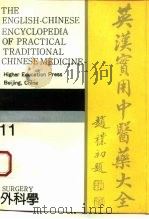
- 英汉实用中医药大全 11 外科学
- 1994 北京:高等教育出版社
-
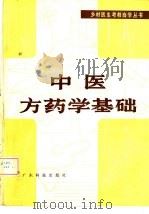
- 中医方药学基础
- 1982 广州:广东科技出版社
-
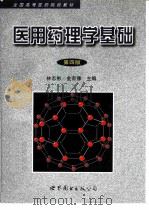
- 医用药理学基础
- 1994 世界图书出版公司北京公司
-

- 中医中药学基础
- 1981 战士出版社
-
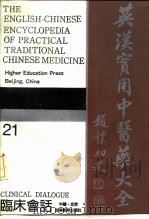
- 英汉实用中医药大全 21 临床会话
- 1991 北京:高等教育出版社
-
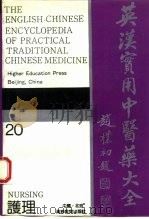
- 英汉实用中医药大全 20 护理
- 1992 北京:高等教育出版社
-
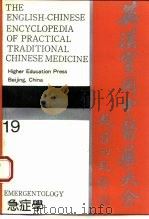
- 英汉实用中医药大全 19 急症学
- 1994 北京:高等教育出版社
-
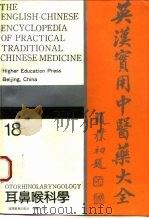
- 英汉实用中医药大全 18 耳鼻喉科学
- 1994 北京:高等教育出版社
-
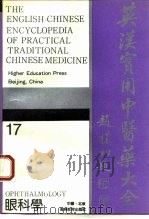
- 英汉实用中医药大全 英汉对照 17 眼科学
- 1994 北京:高等教育出版社
-
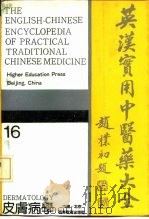
- 英汉实用中医药大全 16 皮肤病学
- 1991 北京:高等教育出版社
-
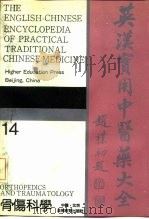
- 英汉实用中医药大全 14 骨伤科学
- 1992 北京:高等教育出版社
-
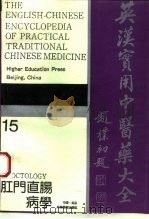
- 英汉实用中医药大全 15 肛门直肠病学
- 1994 北京:高等教育出版社
-
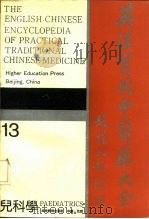
- 英汉实用中医药大全 13 儿科学
- 1991 北京:高等教育出版社
-
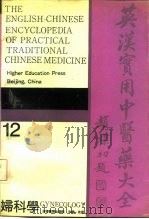
- 英汉实用中医药大全 12 妇科学
- 1990 北京:高等教育出版社
提示:百度云已更名为百度网盘(百度盘),天翼云盘、微盘下载地址……暂未提供。➥ PDF文字可复制化或转WORD
